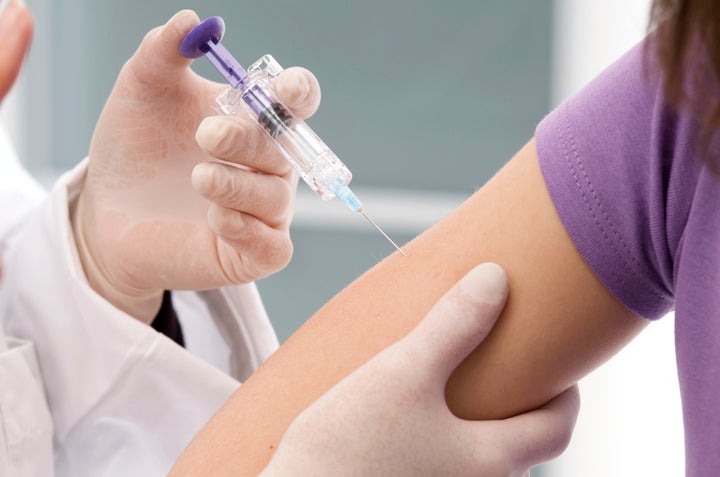
By Kylie Gumpert
July 30 (Reuters) - The percentage of U.S. teenagers vaccinated against the human papillomavirus increased slightly in 2014, but the rate lags behind other immunizations, the Centers for Disease Control and Prevention said on Thursday.
The HPV vaccine, sold as Gardasil by Merck & Co and Cervarix by GlaxoSmithKline, protects against the most common sexually transmitted infection. Each year, 27,000 people nationwide are diagnosed with a cancer caused by the virus, including cancers of the cervix, penis, anus and throat.
The CDC said the percentage of girls between 13 and 17 years old who received at least one dose of the vaccine increased by 3.3 percentage points to 60 percent. For boys, the rate increased 8.1 percentage points to 41.7 percent.
In that same age group, 39.7 percent of girls received at least three doses of the vaccine, up 2.9 percentage points, compared with 21.6 percent of boys, a rise of 8.2 percentage points.
By comparison, 87.6 percent of teens received the Tdap vaccine against tetanus, diphtheria and pertussis.
Anne Schuchat, director of the CDC's National Center for Immunization and Respiratory Diseases, said U.S. healthcare providers are still not recommending HPV vaccines as strongly as they promote other immunizations.
"We don't believe that cost is the principle barrier," she said.
Gardasil was approved by U.S. health regulators in 2006, and became the center of a debate over how early doctors and parents should discuss the risk of sexually-transmitted disease with teens and younger children.
"The vaccine got off on the wrong foot with the public, but with physicians too because a fair number thought they would have to talk about sexual contact and they were reluctant to," said Dr. Carol Baker, executive director of the Center for Vaccine Awareness and Research at Texas Children's Hospital.
Teenagers from lower income families had slightly higher vaccination rates, a trend attributed to public health programs such as Vaccines for Children that cover costs for families in need. Under the 2010 Affordable Care Act, private insurers are required to cover vaccines.
The 2014 National Immunization Survey of teens collected data regarding 20,827 adolescents. (Reporting by Kylie Gumpert; editing by Michele Gershberg and Grant McCool)
Also on HuffPost:

